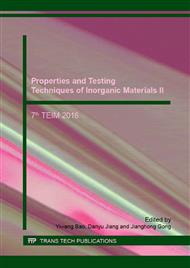p.215
p.220
p.225
p.230
p.235
p.240
p.245
p.250
p.255
Effect of Pore Size on Partial Discharge in Ultra-High Voltage Ceramic Capacitors
Abstract:
Effect of pore size on partial discharge in ultra-high voltage ceramic capacitors was investigated. Nondestructive ultrasonic detection was used to measure pore size in ceramics while the partial discharge characteristics were evaluated by a discharge detector. It is found that the partial discharge quantity and discharge inception voltage greatly depend on the size of the biggest pore in the ceramic. The partial discharge characteristics become worse when the inner pore is bigger. Possible explanation is discussed based on an equivalent circuit simulating the capacitor with one large pore.
Info:
Periodical:
Pages:
235-239
Citation:
Online since:
January 2017
Authors:
Price:
Сopyright:
© 2017 Trans Tech Publications Ltd. All Rights Reserved
Share:
Citation:


